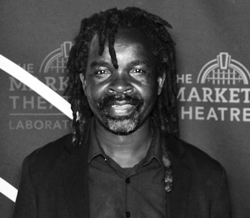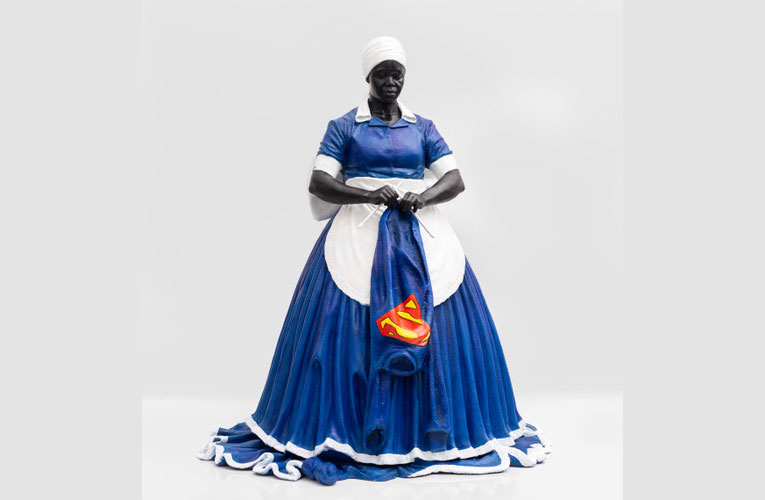Mary Sibande and Dorothy Kay, two artists whose art practices and styles are similar and yet dissimilar
By Edward Tsumele, CITYLIFE/ARTS Editor

They are from totally two different generations and cultural backgrounds. However their art practices mirror each other in many respects and therefore it making sense for the late Dorothy Kay and relatively young South African contemporary artist Mary Sibande to have an exhibition of their works, being jointly exhibited.
This exhibition organised by Strauss &Co. does not only add new impetus of intellectual rigour on the South African contemporary art scene, but also reflects on the intergenerational similarities between these two artists’ art practice. However this is not t suggest that the two artists are similar in every respect. In fact they are also dissimilar in some aspects of their art practice. But If one looks much closer to the works on display, they is no doubt that one notices a lot of references to Sibande’s works in relation to the broad practice of Dorothy Kay in as far as focusing on domestic workers us concerned. However the similarities end there. The portrayal of domestic workers by the two artists does not necessarily suggest that they represent the same thing in the two artists’ representation.

For example Sibande’s domestic workers for example are a subversion of the traditional roles played by these category of workers in South Africa, who exist in a state of powerlessness and power imbalances between an employer and employee. A domestic worker in the South African context represents someone whose relationship with the employer is heavily skewed in favour of the powerful employer..
However the domestic workers in Sibande’s art practice, now increasingly called domestic helpers, are confident and futuristic beings.
And taking place this July running into August, Women’s Month, this exhibition could not have come at a better time potting a spotlight on these two remarkable female artists.

“Strauss & Co is pleased to renew it commitment to education with a curated exhibition juxtaposing the work two historically important South African artists, Dorothy Kay and Mary Sibande. Titled Dream Invisible Connections, the exhibition will offer audiences a rare opportunity to view a large range of works by both Dorothy Kay and Mary Sibande, many on loan from private and institutional collections.
Curated by Strauss & Co art specialists Arisha Maharaj and Wilhelm van Rensburg, Dream Invisible Connections will be presented in Strauss & Co’s dedicated gallery at its Houghton offices in Johannesburg (11 July – 12 August 2022). Dream Invisible Connections is the fourth in a series of legacy exhibitions pairing prominent South African artists. Introduced in 2019 with a presentation of works by Louis Maqhubela and Douglas Portway, this well-received exhibition series has since explored linkages and commonalities between Maggie Laubser and Gladys Mgudlandlu (2020), and Robert Hodgins and George Pemba (2021).
“The possibly unexpected pairing of Dorothy Kay with Mary Sibande fulfils the mandate of the exhibition series by providing new frameworks for the appreciation and interpretation of important South African artists,” says Strauss & Co’s head curator Wilhelm van Rensburg. “The exhibition proposes new ways of interpreting Sibande’s various depictions of her iconic domestic worker alter ego, Sophie, and, in the case of Kay, of delineating connections between her virtuoso realist painting.”

Although vastly dissimilar artists, the exhibition invites audiences to pause on Kay’s well-known realist portrait, Cookie, Annie Mavata (1956). Based on a photo taken by Kay in 1948, the painting depicts the artist’s Xhosa cook in blue uniform. Although produced in a loaded historical context, the grandeur of Kay’s painting shares obvious affinities with the splendour of Sibande’s equally famous domestic worker alter egos, many depicted in blue uniforms.
Sibande, who came to wider prominence with a series of billboards in Johannesburg’s inner city, works across diverse media, notably textile, sculpture and photography. The exhibition will feature a number of photographic prints, as well as a series of new figurative bronzes on loan from SMAC Art Gallery

Kay will be represented by a number of historically important oils. They include The Elvery Family: A Memory (1938), which montages recollections of Kay’s siblings and parents, on loan from Iziko South African National Gallery, and Commerce (1943), a multi-part harbour scene, formerly installed in in the Agents’ Room of the South African Reserve Bank in Port Elizabeth and now in the collection of the Nelson Mandela Metropolitan Art Museum.
Dream Invisible Connections is supported by an illustrated catalogue featuring an essay by Arisha Maharaj and Wilhelm van Rensburg and contextual texts related to key works in the exhibition.










